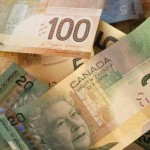Gold futures were little changed this week, as investors weighed economic data with growing tensions in Ukraine ahead of the three-day weekend in the US. The economic outlook in the worlds top economy boosted the dollar to a new one-year peak, while Ukraine saw talks of an open war.
Gold futures for delivery in December dropped 0.17% on Friday, closing at $1 287.4 per troy ounce, ~0/5% up for the week. Weekly high and low were at, respectively, $1 297.6 on Thursday and $1 275.0 per ounce on Monday. The contract lost ~2% last week.
“Anything above $1,300 will attract some selling. We have to see if the situation in Ukraine is worsening,” Ronald Leung, chief dealer at Lee Cheong Gold Dealers in Hong Kong, said for Reuters. “Sentiment is not so bullish for gold. We have to see when interest rates will start to go up.”
Ukraine
Speaking at a press conference, US President Barack Obama said it is clear that Russia is responsible for the conflict in eastern Ukraine, amid more reports and data of Russian involvement.
“There is no doubt that this is not a home-grown, indigenous uprising in eastern Ukraine,” he said. “The new images of Russian forces inside Ukraine make that plain for the world to see.”
Reports of dozens of Russian armored vehicles entering Ukraine yesterday added to pressure on Russia, after several other such cases recently and the capture of 10 Russian paratroopers by Ukrainian military inside Ukraine. Meanwhile, NATO released new satellite images, showing Russian self-propelled artillery in Ukraine.
For the first time in quite a while, Russian media have questioned the actions of the Kremlin and scrutinized its ambiguous and shady stance on the reports, reminding of the similar circumstances amid which Chechnya and Afghanistan have been invaded in the past by Russia and the USSR, respectively.
Russia has repeatedly denied accusations that it supports the rebels in any way. A growing number of Russian heavy weaponry, including the system used to bring down the civilian airliner in June, and so-called “volunteers”, in addition to Russian troops reported on numerous occasions as fighting alongside the rebels and mysterious burials of Russian soldiers, who officially died on “military exercises”, raise serious questions.
“Worries about Ukraine are delivering some kind of support. However, I don’t think that is strong enough to trigger a more sustainable move into safe havens,” Heraeus precious metals trader Alexander Zumpfe said for Reuters. “Market expectation of higher U.S. interest rates is currently outweighing that safe-haven move.”
US, EU data
Preliminary figures on US GDP growth for the second quarter of 2014 were posted yesterday, to log the highest reading in almost four years at 4.2% growth on an annual basis, well above expectations. Meanwhile, jobless claims were little changed from a week ago, recording 298 000 new applications. Pending home sales also clocked a better-than-expected monthly growth.
Earlier, durable goods orders were logged for a mixed read. Overall, orders added 22.6%, the biggest monthly increase on record, as the figure was boosted by a surge in orders for commercial airplanes for Boeing last month. Core orders, which exclude volatile items such as airplanes, were logged down 0.8% on a monthly basis, paring much of the positive vibes from the overall figure.
In addition to brightening US demand outlooks, the positive data also strengthened the dollar, which reached a 13-month peak this week. Since gold, like many other commodities, is denominated mostly in dollars, a stronger greenback increases the price of the precious metal to other currencies, lowering its investment appeal.
Additionally hurting gold, the euro was pressured by further downbeat data in the Eurozone this week, with weakening labor market in Germany, the Blocs top economy, and a 0.3% annual Bloc-wide CPI, which is the lowest level in almost five years.
Weak EU economic data weakens the euro and adds to speculation that the ECB will implement a monetary stimulus program, further pressuring the euro, which directly supports the dollar and pressures gold.
Next week
Next week will feature a plethora of economic data. In the US, PMIs and crucial employment data will be released, as investors seek more data to support speculation of an earlier rate hike. In Europe, factory and services PMI readings will be posted, in addition to retail sales and GDP. More importantly, the ECB will hold its monthly meeting to decide on interest rates, in a highly anticipated event as outlooks for a monetary intervention gain momentum.





